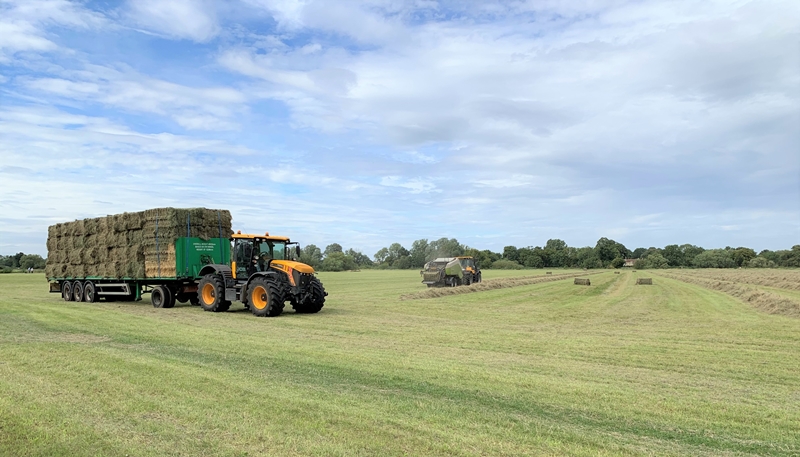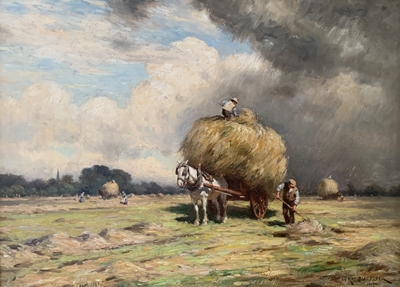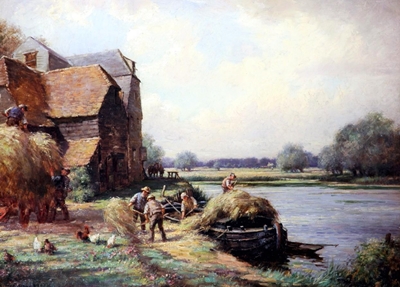Hemingford Meadows, July 2020

Walking along the bridleway from Hemingford Abbots to Houghton Mill on a glorious day in mid-July, I found the meadow buzzing with activity. Haymaking was in full swing. The hay had been cut a few days earlier, and now it was being turned and baled. There was no time wasted; vehicles zoomed around the field in a well-ordered scheme. One machine steadily moved the cut and dried grass into rows. This was followed by a tractor with a baler - travelling at nearly 30 mph as it swallowed the hay, then disgorged it in giant half-ton (1,000 lbs) rectangular bales. A relay of tractors with forklifts carried the bales, one by one, and loaded them high on to the waiting wagons. It was an impressive sight. But how different, I thought, to haymaking here 100 years ago.
 |
 |
William Kay Blacklock painted the same scene in 1915 and the spire of Houghton Church can be seen in the background. There are no machines. Women are raking and turning the hay. It isn’t baled, but remains loose; men lift and load it with pitch forks on to the carts or hay-wains, which the horses will then lead back to the farm. Long, slow, heavy work for everyone – except it is a race (as much as is possible) against the weather and the looming storm.
Another painting by Blacklock is titled ‘The Hay Barge’ and is set at Hemingford Mill (demolished c1958). Hay has been brought by lighter across the backwater, from the island to the north of Hemingford lock. It may look an idyllic rural scene, but six men are labouring hard. Before this hay will be stacked in the farmyard, it is being handled at least four times – from the meadow onto a cart, then into and then out of the lighter, and then onto a cart by the mill.
Haymaking in 1915, in the vast flood plain meadows of the Great Ouse, took weeks of back-breaking labour-intensive work, not two to three days of tractor activity as in 2020. But in 1915, in a pre-mechanised farming age, the hay crop was a vital resource; it was the fuel, the winter feed for the draught animals that pulled the ploughs on arable land and for the horses that gave transport.
Trustee Bridget Flanagan
All images supplied by Bridget Flanagan

